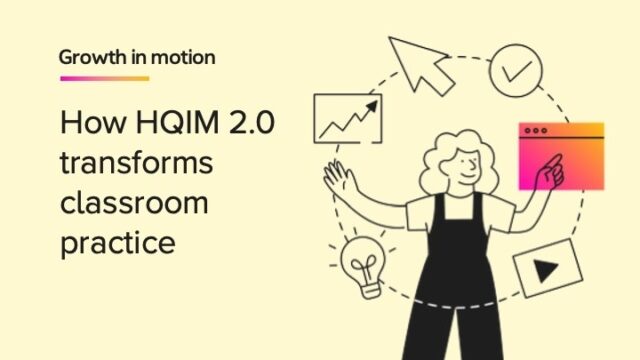
Imagine the excitement on a child’s face as they dive into the world of stories, understanding and loving the pages they turn. Early reading experiences have the power to shape lifelong learners and spark a love for reading. For students who need extra help with early reading skills, targeted strategies can make a significant difference.
In this article, we explore effective early reading intervention strategies designed to support young learners. From phonemic awareness to comprehension, these evidence-based approaches can help bridge the gap and set students on a path to becoming confident, enthusiastic readers.
What is early reading intervention?
Early reading intervention can be defined as “intensive or targeted instruction on reading to accelerate those who are reading below grade level.” Early reading intervention is necessary to help students develop the foundational literacy skills they need to be successful in their academic journey and beyond.
Early intervention strategies in reading aim to support striving students with targeted instruction to help them become proficient readers.
What is the importance of early reading intervention?
Young students deserve the chance to love reading, and early intervention is key to making that possible. Early reading intervention can greatly influence students’ entire educational journeys, setting them up for success and a lifelong passion for learning.
By the time students reach third grade, there is often a transition from “learning to read” to “reading to learn.” This shift means that strong reading skills are essential for understanding and engaging with all subjects.
Early intervention helps prevent these challenges by addressing reading difficulties early on. Through targeted support, students can build essential skills like phonemic awareness, phonics, fluency, vocabulary, and comprehension. These foundational skills are necessary for reading success and overall academic achievement.
Early reading intervention builds a positive relationship with learning. And when students get the help they need, they become more confident and enthusiastic about reading and learning.
Research on early reading intervention
As early reading intervention research shows, identifying and supporting striving readers early on can significantly improve reading outcomes. Early identification and targeted support in the five pillars of reading listed below can help students develop the foundational skills needed to be proficient readers:
- Phonemic awareness
- Phonics
- Fluency
- Vocabulary
- Comprehension
According to the National Reading Panel, these pillars are instrumental to reading instruction. Developing these skills helps younger students access print, read fluently, and build connections with vocabulary and the background knowledge needed to understand a story.
The American Speech-Language-Hearing Association (ASHA) notes that language and literacy are also connected. Therefore, treating communication and language difficulties early on can also prevent later problems with learning and reading.
Early literacy intervention strategies
Early interventions in reading support student progress. During the early years of learning to read, focusing on a solid foundation of skills through effective instruction is necessary. For any student needing support in essential skills, the strategies below will help with early literacy development in six specific areas.
1. Phonological awareness
Phonological awareness is a critical element of early reading and involves the ability to recognize and manipulate the sounds of spoken language. Early interventions focusing on phonological awareness can help identify and support students at risk of reading failure.
- Games and activities: Engage students in activities that develop their ability to hear and manipulate sounds. For instance, rhyming games, clapping out syllables, and segmenting words into individual sounds can be very effective. Use tools like sound cards, puppets, and digital apps to make learning phonemes fun and interactive.
- Example activity: When reading a book that rhymes, try leaving out the last word for students to say aloud and fill in with you. For example, “You must never touch a spider unless it has a cake. To touch a hungry spider is a silly move to [make]!” This activity works great with doing repeat reads of a familiar story.
2. Phonemic awareness
Phonemic awareness, a subcomponent of phonological awareness, involves identifying and manipulating individual sounds (phonemes) in spoken words. Focusing on phonemic awareness early on can help detect and help students at risk of reading difficulties.
- Word games and activities: Involve students in activities that enhance their ability to hear and work with individual sounds. Focus on rhyming games, clapping out sounds in words, and breaking words into phonemes. Use tools like sound cards, puppets, and digital tools that can make learning these skills enjoyable and effective. Additionally, tongue twisters can help children identify individual sounds.
- Example activity: Create a sound sort by preparing picture cards or objects that start with different sounds. Label containers with different sounds (e.g., /b/, /m/, /s/). Have students pick a card or object, say its name, and place it in the matching sound container (e.g., “ball” in /b/ container). This activity helps students practice identifying and sorting phonemes.
3. Phonics instruction
Phonics instruction involves teaching the relationship between letters and sounds. Phonics is crucial for decoding new words as it enables students to break down words into sounds and syllables, fostering strong reading skills.
- Letter-sound correspondence: This strategy involves teaching the sounds associated with each alphabet letter. Use visual aids, songs, and repetition to reinforce these connections.
- Decoding practice: Provide opportunities for students to practice blending sounds to form words. Activities can include matching games, word-building exercises, and interactive reading technology-based games.
- Example activity: Build words with letter tiles. Give students a set of letter tiles and start with simple words. Have them sound out and arrange the tiles to in the correct order to form words. For instance, say “cat” and have them find C, A, and T. Increase the complexity of the words as students improve.
4. Vocabulary building
Reading success relies on a strong vocabulary. A robust vocabulary can include academic vocabulary, sight words, and everyday language, which are all needed for reading comprehension and overall literacy development. Explicit teaching of vocabulary and word-learning strategies enhances fluency and comprehension.
- Direct instruction: Introduce new words in context and provide clear definitions. Use visual aids like picture cards to help young learners understand and remember new vocabulary.
- Daily conversations: Incorporate new words into daily interactions and encourage students to use them. Reading aloud to students and discussing the stories can also boost vocabulary development.
5. Fluency development
Fluency is reading with a pace that ensures comprehension, focusing on the text’s meaning rather than individual words. Practice helps young readers build a fast, efficient reading brain.
- Modeled reading: Demonstrate fluent reading by reading aloud to students. Use expressive reading to show how tone and pace can change meaning and help one become a fluent reader.
- Oral reading: Have students read aloud and provide immediate feedback and support. Use echo reading (where the student repeats after you) and choral reading (where you read together) to build confidence and fluency.
6. Comprehension skills
Comprehension is the ultimate goal of learning to read. Students achieve it by learning various strategies for understanding different texts and their structures. As they apply and monitor these strategies, their ability to comprehend complex texts improves.
- Questioning: Encourage students to ask and answer questions about the stories they read to help them think critically about the text.
- Summarizing: Teach students to summarize stories in their own words to reinforce understanding.
- Visualization: Encourage students to create mental images of the scenes, characters, and events in the stories they read; this can help them remember and understand the text better.
By implementing these early literacy intervention strategies, educators can provide the support young learners need to develop strong reading skills and build a foundation for future academic achievement.
More insights and strategies
Learn more about the importance of early reading intervention and evidence-based approaches to help students on their reading journeys:

In order to accelerate students’ reading to grade-level proficiency, here is a list of reading intervention strategies to help students make progress.

Implement these research-based reading interventions for elementary students to put students who have fallen behind back on track.

Learn more about response to intervention (RTI), a three-tier system to identify how to help support your students in the classroom.
The views expressed in this article are those of the author and do not necessarily represent those of HMH.
***
Teaching middle and high school students? Read more about reading fluency interventions.
Learn how our reading intervention programs can accelerate students reading below grade level.
Get our free Reading Intervention eBook today.














